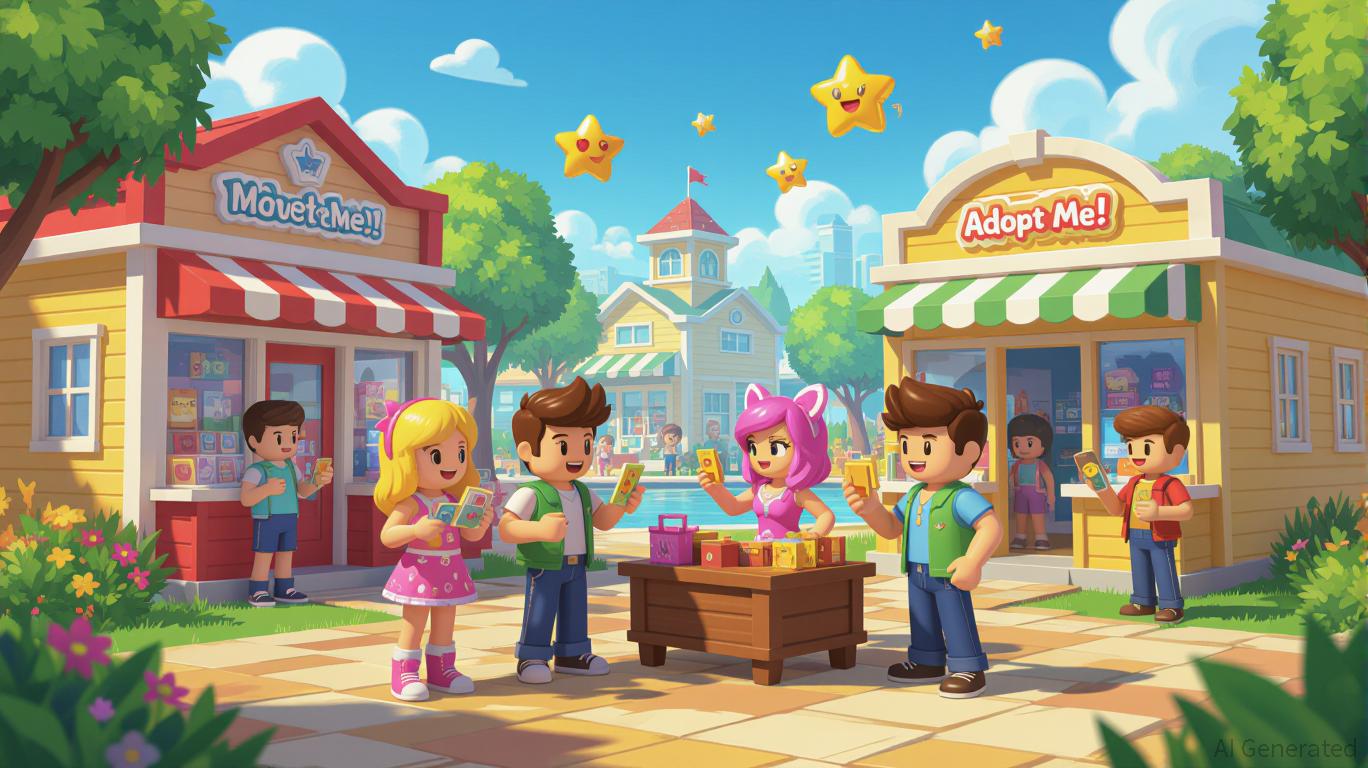Harrison BrooksSaturday, Aug 2, 2025 1:50 am ET
![]() 3min read
3min read
The gaming industry is no longer just about pixels and polygons—it’s about ecosystems. Roblox (RBLX) has mastered this, transforming itself from a kids’ playground into a global platform with a $100B+ valuation potential. At the heart of its strategy lies a self-reinforcing flywheel: viral game creation, rising engagement among 13+ users, and a deferred monetization model that prioritizes long-term value over short-term profit. For investors, understanding this dynamic is key to assessing Roblox’s role in the next phase of the metaverse.

The Flywheel in Motion: User Growth and Content Creation
Roblox’s flywheel begins with its user base. In Q2 2025, the platform reported 111.8 million daily active users (DAUs), with 64% of these users aged 13 and older. This demographic shift is critical: older users are more likely to spend time and money on the platform. For example, 13+ users accounted for 66% of total engagement hours in 2025, a 72% year-over-year increase.
This engagement is fueled by an explosion of user-generated content (UGC). With AI tools like Cube 3D and AI-assisted scripting, developers can create games 35% faster than before. In Q2 2025, 44 million games were published, 70% of which incorporated AI-generated assets. This democratization of content creation has led to viral hits like “Grow a Garden,” which drove both engagement and spending.
The flywheel’s second gear is creator monetization. Roblox’s Developer Earnings (DevEx) surged to $316.4 million in Q2 2025, a 52% year-over-year jump. Notably, over half of this growth came from non-top 10 games, signaling a healthy ecosystem where small creators thrive. The top 1,000 developers now earn an average of $820,000 annually, a 570% increase since 2019. This creator economy not only retains users but also attracts new talent, ensuring a continuous influx of fresh content.
Deferred Monetization: The Engine of Long-Term Value
Roblox’s financial model is built on deferred monetization, a strategy that defers revenue recognition for durable virtual goods over a 27-month user lifetime. For example, a $30 Robux purchase generates $1 of revenue monthly for 28 months, with $27 deferred. This creates a bookings-to-revenue lag, where bookings (cash collected) outpace GAAP revenue. In Q2 2025, bookings hit $1.44 billion (up 51% YoY), while revenue was $1.08 billion (up 21%).
While this model has led to a GAAP net loss of $279.8 million in Q2 2025, it also ensures strong cash flow generation. Free cash flow grew 58% to $176.7 million, supported by a $1.2 billion net cash position. For investors, this deferred approach is a double-edged sword: it sacrifices short-term profitability but builds a durable revenue base. The 13+ demographic is particularly valuable here, with 23.4 million monthly unique payers (up 42% YoY) and an average booking per payer of $20.48.
Advertising Scalability: The Next Revenue Frontier
Roblox’s advertising strategy is still in its early stages but shows massive potential. The platform has piloted rewarded video ads with brands like Google and Travis Kelce, offering users in-game rewards for watching ads. These ads are less intrusive than traditional formats and align with the platform’s social-commerce model.
The 13+ user base is pivotal here. With 51% male and 44% female users, and a balanced global distribution (35.7% in Asia-Pacific, 20.9% in Europe), Roblox offers advertisers a rare demographic diversity. The platform’s dynamic discovery systems—powered by behavioral data—already increase the number of games breaking into the top 100 by 22%. Advertisers can leverage this data to target high-engagement audiences, making Roblox an attractive alternative to traditional gaming platforms.
Moreover, Roblox’s 4.2 million creators and 675 “high-earning” developers (those making over $100,000 annually) create a fertile ground for brand partnerships. For example, a fashion brand could sponsor a virtual clothing line in a popular game, reaching millions of users while supporting creators.
Risks and Rewards: A Balancing Act
Roblox’s path to profitability is not without challenges. Rising operational costs, including $285 million in stock-based compensation in Q2 2025, threaten free cash flow quality. Leadership transitions, like the departure of Chief Product Officer Manuel Bronstein, also raise execution risks.
However, the platform’s $4.7 billion cash reserves and expanding international markets (DAUs outside the U.S. and Canada grew 46% YoY) provide a buffer. The key for investors is whether Roblox can scale advertising and DevEx revenue while maintaining user engagement.
Investment Thesis: Buy for the Long Game
For long-term investors, Roblox’s flywheel and deferred monetization model present a compelling case. The platform is already capturing 2.4% of the global gaming content market, with ambitions to reach 10% by 2030. With $1.1 billion in Q2 revenue and $1.4 billion in bookings, the company is executing its vision while building a cash-cow business.
Investment advice: Buy RBLX for its durable flywheel and long-term monetization potential, but hold for 3–5 years to see deferred revenue materialize. Short-term volatility is likely due to GAAP losses and macroeconomic headwinds, but the platform’s stickiness and global expansion justify a premium valuation.
In a $100B+ gaming market, Roblox isn’t just a player—it’s a foundational infrastructure for the metaverse. For investors willing to think decades ahead, the question isn’t whether Roblox will succeed, but how much of the future it will capture.
